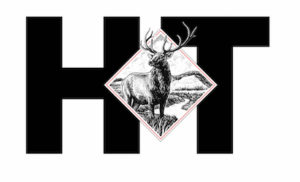By JEFF MADISON
Special to the Herald Times
First, I would like to thank The Commission, the Technical Working Group (TWG), and the
Stakeholder Advisory Group (SAG) for their efforts in developing The Colorado Wolf Restoration and Management Plan. You have been charged with the near impossible task of producing a wolf plan that satisfies both sides of an ever widening cultural divide in this state. You have developed a plan that is biologically sound, now the trick is to develop trust and support.
Let me give you some of my history and, hopefully, establish a small amount of credibility. I grew up on the western slope of Colorado and after college, started work for the state in 1976 as a Park Ranger. In 1978, I was employed by the DOW and stationed as a wildlife officer (DWM) in the Meeker Area. Subsequent positions in my 31 year career were, an area terrestrial biologist (primarily in Rio Blanco and Moffat Counties), an Area Wildlife Supervisor (AWM) in the San Luis Valley, and finally the Senior Wildlife Biologist for the NW quarter of the state. After state retirement in 2007, I served seven years as the Planning Director and Natural Resource Specialist with Rio Blanco County.
During my tenure with the DOW, I was involved with the Piceance Deer Survival study, the White River Elk Movement study, the White River moose reintroduction, the Dinosaur bighorn releases, and the Lynx reintroduction efforts. I was co-lead for the Blue Mountain Elk Movement study, the lead for the Grand Mesa Moose reintroduction, and the lead for the Black Footed Ferret reintroduction. I have spent thousands of hours flying (helicopters and fix-winged) game classification, census, and capture in NW Colorado. I have trapped and/or transplanted elk, deer, moose, antelope, bear, bighorn sheep, lynx, turkeys, black footed ferrets, and chuckers,
I am decidedly pro-wolf. In Northwest Colorado that puts me in a very small and shrinking minority. I believe in the benefits of the trophic cascade that wolves produce. I support a tenant of Aldo Leopold that, in wildlife management as in life, “the intelligent tinkerer does not discard the spare parts.” Contrary to the strong public sentiment, I do not believe that wolves will have a measurable effect on elk numbers. Nor does the data support a human safety problem. Elk and deer co-evolved with wolves and will do fine.
Despite all this, I do not support releasing wolves into Northwest Colorado.
Wildlife management is in large part, people management. Ballot box management of wildlife has a history of failures (bears in Colorado, lions in California). Legislatures and Commissions can pass wildlife statutes and regulations, but these are doomed to failure without the support of the publics affected by them. True wildlife management occurs in coffee shops, in the bleachers at local sports events, at kitchen tables, and around thousands of campfires. You must have local public support.
My concern is that the Colorado Wolf Restoration and Management Plan ( the Plan) as written will merely sacrifice individual wolves on the altar of biodiversity and trophic cascade without any real chance of success. You have only to look at recent wolf history in Colorado to reach this conclusion. The Plan (page 6) lists a total of 19 wolves which have recently entered or were produced in the state. What has been the fate of those animals? They were shot legally, shot illegally, mistaken for coyotes, poisoned, hit by cars, killed returning to their home state, or just gone. Right now, only two can be confirmed on the landscape. The Moffat County pack is gone. The North Park pack lost three subadults to hunters in Wyoming, with only a pair of males recently located and collared. I am reasonably sure this will not be a “breeding pair.”
Northwest Colorado does not have the thousands of acres of protected, un-hunted, un-grazed habitat that is present in Yellowstone National Park, and so does not have an area where wolves can establish a secure foothold. Yellowstone also supplies a constant recruitment of wolves to adjacent areas, off-setting the losses in surrounding states.
NW Colorado does not see the wolf as an essential apex predator, but as a ruthless killing machine that will affect their lives and livelihoods. The people consider themselves to be the apex predator and that suitable habitat for wolves is already occupied. As in other states, wolves will be a problem for livestock producers. We have already seen this in Colorado.
The Plan correctly assumes that the reintroduced wolf will quickly spread to public lands, mostly the White River National Forest, following the natural migration of the elk herds (Plan, page 30).
Undiscussed in the Plan is that specific elk movement. After release onto the elk and deer winter range near Eagle (Piney River herd unit, E-12, Population 3,800) one would expect the wolves to follow the elk spring migration north to the Flattops and surrounding National Forest lands. There they will mix with the much larger summering White River elk herd ( E-6, Pop. 45,000) and to a lesser extent the Bears Ears herd (E-2, Pop. 24,000).
As the majority of the elk return to winter range in the fall, moving to the north and northwest, the wolves will come with them. Wolves will quickly be introduced into the “teeth” of Northwest Colorado, the region with the most free ranging cattle, the most free ranging sheep, the highest big game hunter numbers in the nation, and a human population with a near extreme anti-wolf sentiment (look at the vote results, page 2.)
The Plan frequently references the Ditmer paper (Page 32) which looked at the overlay of habitat suitability and levels of potential conflict (judged by precinct level voting on the ballot measure and livestock levels). No surprise, NW Colorado resulted in the highest levels of suitability and of potential conflict (Ditmer, Page 9). Both the TWG and the SAG recommended not considering the voting records in determining release area (TWG Page 21, SAG Page ). It would appear that these recommendations were applied in release site selection.
Ditmer did not overlay relative hunter numbers and attitudes in his analysis, however this should not be ignored. While most hunters are opposed to wolf reintroduction, they are law abiding citizens. However, after 31 years of wildlife law enforcement, I know that the bad guys are out there. There will be illegal kills and even if by a very small number of people in the field, it will be enough to scuttle the wolf reintroduction. Illegal kills will be extremely difficult, if not impossible to prosecute, typically resulting in some unsuspecting guy in Oklahoma trying to explain to the Fish and Wildlife Service why someone would put an active wolf GPS collar in the back of his pickup.
The following is a listing of Plan problems and Recommendations.
Problem: As discussed above, the proposed release site in the Eagle/Vail valley will likely result in the rapid movement of the wolves into the areas of highest social resistance, highest potential conflict with livestock, and highest hunter pressure.
Recommendation: Reevaluate the initial release sites with strong emphasis on the amount of social resistance, livestock grazing patterns and numbers, hunter numbers, and elk movement patterns. This will quickly eliminate the proposed Eagle/Vail valley and focus efforts more on central Colorado. I do not have detailed insight of the proposed Gunnison Valley site so will not speak to it, but for NW Colorado, the Granby/Grand Lake area appears to have a much greater chance for a successful reintroduction. Because of seasonal elk movement patterns from west to east and back, and the mixing of those elk with the Estes Park elk, rapid colonization in Rocky Mountain National Park and the surrounding federal lands could be expected.
Problem: The language of the ballot initiative requires the “reintroduction on designated lands in Colorado located west of the continental divide.” There is no discussion in the Plan as to what happens with the inevitable wolf colonization to the eastern slope. The main body of voters that approved the ballot measure, specifically exempted themselves from the costs and effects of the action. Do not underestimate the level of the “us versus them” animosity this has created.
Recommendation: There is no prohibition in the ballot measure of allowing colonization of wolves on the eastern side of the state after initial release. Revise the plan to allow and facilitate wolf populations along both sides of the continental divide. To do otherwise ignores areas with the highest probability of success and opportunities, like Rocky Mountain National Park which is the closest thing we have to the Yellowstone ecosystem. Wolf establishment in that area would give time to establish trust and support in resistant areas of the state while allowing the adaptive management so often supported in the Plan.
Problem: The release of wolves only on private or state lands, while acknowledging their likely quick movement to national forest, is seen as an effort to circumvent the NEPA process (Plan Page 34). It says as much in the Plan. This does not help in building trust.
Recommendation: Even if it lengthens the process, comply with the requirements for NEPA analysis.
Problem: The Plan calls for a livestock producer to obtain a permit from the CPW before lethal control is allowed, even in the event where they come across active stalking and attacking by wolves, described as “teeth on.” (SAG, page 57 and Plan, pages 43, 46). I realize this is a result of using the ESA 10J “Experimental, Nonessential” but this is an unrealistic requirement and just serves to erode confidence in the plan and furthers the notion that the state is not serious about prevention and compensation.
Recommendation: Through the Plan and regulations, make it as easy as possible for a livestock producer to control active wolf predation, including take as soon as necessary.
Perhaps establish a permit process that would apply to all producers in a given wolf occupied area, issued previous to depredation, but allowing lethal control only when specific conditions (teeth on) are met. Don’t put another level of bureaucracy between producers and their ability to control and be compensated for wolf predation.
Problem: A number of western slope counties, including Rio Blanco County, have formally rejected accepting released wolves into their jurisdiction. There is no discussion in the Plan as to honoring the “no wolf resolutions.”
Recommendation: There are numerous examples across the country where government bodies have declared themselves a “sanctuary” from State or Federal statutes and those have been honored (immigration, marijuana). Consider honoring the localized sanctuaries, or at least address this idea in the Plan.
Problem: There is an interesting discussion on avoiding the real or perceived loss of elk hunting opportunity because of wolf predation (SAG, Page 74, Appendix). The proposed solution is to proactively raise elk population numbers to offset losses. Most elk DAU populations are at or somewhat above objectives. Most of these objectives were lowered in the last 10 years for a number of reasons, not the least of which are game damage, long term habitat degradation, and competition with declining deer herds. Also, the number of licenses allocated to build a population is far lower than the number needed to hold a population at objective.
Recommendation: This strategy, of greatly reduced licenses, will be seen by the public as a confirmation of the negative effects of wolves. Continue to set reasonable objectives through the process already established where wolves will be only one of the considerations.
Problem: The wolf releases under 10J require that surveys be done to show the proposed habitat does not have an existing population of wolves, in this case, less than two successfully breeding pairs in the state. CPW is relying on the lack of sightings and sign to indicate this condition is met with no plans to actually survey.
Recommendation: This approach is likely to be successfully challenged in court. Set up and conduct statistically defensible surveys before it derails the process.
In summary, my goal in all this is a final plan that will facilitate wolves on the ground, long term.
Please consider these comments and recommendations before the current draft is approved.
There is no trophic or ecological benefit from a dead wolf!
Thank you,
Jeff Madison
Meeker
(The Colorado Parks and Wildlife Commission has produced a final draft of the Wolf Plan and is taking comments the next two weeks. Just enter CPW in your browser and follow the prompts to see the Plan and comment form.”)




















